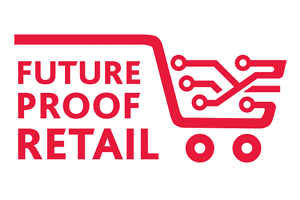Driverless Vehicles

Self-Driving Semi-Trucks:Powering the Future of Logistics
Imagine a manufacturing facility that produces the latest model of Bluetooth speakers. As the speakers roll off the assembly line, a robot loads them onto a truck. When the truck is full, its motor is turned on, ready to make the journey to a fulfillment center near a major metropolitan area. But this particular truck isn’t started by a driver — it’s started by a supply chain supervisor who will never sit behind the wheel.
Thanks to advanced computer programming, this truck can navigate highways for hours at a time without the need to stop. It is programmed to follow the most efficient route and drive only on roads where tractor-trailers are allowed, accelerating delivery times and improving safety.

Once the truck arrives at the fulfillment center, more robots meet it to begin unloading. When a customer places an order for a Bluetooth speaker, a robot comes to pick up and pack the product and places it on a smaller, driverless box truck. When the truck arrives at the customer’s address, a small autonomous delivery drone onboard (think R2-D2’s second cousin!) is deployed to unload the package and drop it at the customer’s door.
This is a future where your products may be able to move from an assembly line to a customer’s door without ever being touched by human hands — and it’s closer than you might think. In fact, use of self-driving semi-trucks is already beginning, with some retailers using them for short-haul trips, such as online grocery delivery. The self-driving truck industry anticipates it will have thousands of vehicles on America’s roads by 2028.
While self-driving, electric vehicle (EV) trucks could require a substantial upfront investment, they have the potential to help retailers like you accelerate delivery times, lower costs, improve safety, and reduce emissions. R&D and clean energy tax credits, could help offset some of the initial costs.
Want to turbocharge your knowledge of supply chain innovation and the driver shortage? To discover alternative logistics strategies, listen to our 60-second Retail podcast episode: Supply Chain Strategy Deep Dive: Transportation & Logistics (Part 6).
Autonomous Accelerates Safety and Stops Roadblocks
Before diving into the many benefits of autonomous vehicles, it is necessary to clarify that we are referring to fully autonomous vehicles, or Level 5 autonomy. This is where the vehicle can operate without any driver present. While many companies are developing Level 5 autonomous vehicles, those vehicles are not yet on the road. Today there are many vehicles, both gas and electric, that use lower levels of autonomy to assist the driver and enhance safety. Given the dual innovation of both electric and autonomous vehicles happening within the automotive industry, we anticipate that, in the future, most autonomous vehicles will be electric. Here are the definitions of the levels of vehicle autonomy, according to the Society of Automotive Engineers.
No automation. The driver performs all driving tasks (steering, acceleration, braking, etc.)
Driver Assistance. The vehicle features a single automated system (for example, it monitors speed through cruise control).
Partial Automation. This is known as Advanced Driver Assistance Systems (ADAS). The vehicle can perform steering and acceleration. The human still monitors all tasks and can take control at any time.
Partial Automation. This is known as Advanced Driver Assistance Systems (ADAS). The vehicle can perform steering and acceleration. The human still monitors all tasks and can take control at any time.
High Automation. The vehicle performs all driving tasks under specific circumstances. Geofencing is required and human override is an option.
Full Automation. The vehicle performs all driving tasks under all conditions. Zero human attention or interaction is required.
The commercial driver shortage is expected to double in the U.S. by 2030. Many retailers already struggle to find drivers, and others will soon begin to feel the effects of the shortage. But self-driving semi-trucks will help alleviate the issue, speed up delivery, and future-proof the retail business. Unlike trucks with human drivers, self-driving commercial vehicles do not need to take breaks to rest, eat, or use the bathroom. They can be on the road traveling 24/7/365, except for charging and maintenance time. Increased efficiency not only comes with 24 hours of travel time but through enhanced navigational technology, vehicles can be programmed to automatically take the most efficient route. Because they do not need a human driver who may naturally be tired at night, driverless vehicles can travel on the busiest roads at night, avoiding congestion at peak travel times.
Additionally, autonomous trucks can continuously monitor their battery power, tire pressure, and other related data points. GPS programming will enable them to identify service centers along the delivery route and optimize their route to reduce charging and maintenance time and avoid breakdowns.
These core features of self-driving semi-trucks work together to create a faster delivery timeline — ultimately improving the customer experience and getting retailers’ products into the hands of consumers more efficiently. Nothing erodes customer satisfaction more than delayed or unpredictable delivery teams, so retailers must do what they can to avoid those scenarios.
Many retailers and logistics companies pride themselves on a strong record of safety, and self-driving commercial vehicles offer many safety advantages:
- Powerful vision and reflexes: Lasers and radar sensors are much more accurate than human eyes and advanced programming can react quickly to obstacles on the road.
- No liabilities from human drivers: Retailers and logistics companies may encounter safety issues when a driver is tired, distracted, or under the influence, greatly elevating the risk of an accident and exposing the company to legal liabilities. Self-driving technology reduces these risks.
- Ensure road laws are always followed: Sometimes a driver takes a wrong turn and finds themself on a road that forbids tractor-trailers. This creates a serious risk of an accident if the truck cannot fit under an overpass. Thanks to their programming, autonomous commercial vehicles will always avoid these routes.
Despite the numerous benefits, many retailers may still be concerned about the cost of autonomous trucks. Autonomous tractor-trailers could cost as much as $200,000 per vehicle. If that price tag seems high, there are tax credits and incentives available to offset some of the costs.
How Tax Credits and Incentives “Charge Up” Autonomous, Electric Vehicles
Most self-driving semi-trucks are EVs, meaning there are existing renewable energy tax credits available for retailers that purchase these vehicles. These include:
- Commercial Clean Vehicle Credit: This credit applies to new clean vehicles, such as electric and hydrogen fuel cell vehicles. It must be used for business purposes and meet IRS requirements for battery capacity and emissions standards. For vehicles weighing over 14,000 pounds, the value of the credit can be up to $40,000 per vehicle. There is no cap on the number of vehicles a manufacturer can sell to qualify for the credit and a retailer can apply for the credit for each vehicle they purchase.
- Alternative Fuel Vehicle Refueling Property Credit: If retailers choose to purchase driverless EVs, they will likely also need to install charging infrastructure on their property. A tax credit is available for property used to store or dispense clean-burning fuel or recharge vehicles. As of January 1, 2023, the credit is limited to property placed in service in eligible census tracts. An eligible census tract is one in a low-income community or one outside of an urban area. The credit amount equals 6% of the value of the refueling property, subject to depreciation and with a maximum credit of $100,000 for each single item of property. Businesses that meet prevailing wage and apprenticeship requirements may be eligible for a 30% credit with the same $100,000 limit.
- R&D Tax Credit: For many retailers, the most cost-effective way to use self-driving vehicles is to purchase a vehicle from a manufacturer. However, some larger retailers with substantial resources and skills may consider purchasing a business to develop self-driving semi-trucks in-house. These businesses may already be familiar with the R&D tax credit, which they can apply to Qualified Research Activities (QRAs) and Qualified Research Expenses (QREs) for a credit of up to 20%, depending on the method used to calculate the value of the expenses and/or activities. Expenses such as wages, supplies, and contract research can all contribute to the value of the credit — potentially resulting in large tax savings.
- State R&D and EV Credits: In addition to federal credits, there are many state R&D or EV credits and incentives that may unlock additional tax savings. Many state credits and incentives exceed federal credits in value and are transferable. With transferable credits, a business may receive benefits even if it does not owe any income tax. As an example, California’s Hybrid and Zero-Emission Truck and Bus Voucher Incentive program offers vouchers of up to $400,000 per vehicle.

For some of these credits, such as the commercial clean vehicle and alternative fuel vehicle refueling property credits, calculating the value of the property placed in service and accounting for depreciation can be complex. Additionally, some credits and incentives involve direct negotiations with local governments. In both cases, it would be beneficial for retailers to have a tax advisor on their side to help them identify and receive the tax credits that may enable them to future-proof their business.
Don't leave cash on the table. Use BDO’s R&D Tax Credit Calculator for an estimate of your R&D tax credit value to see how much you could save.
How BDO Can Help: Capturing Clean Energy Tax Credits and Incentives
The credits and incentives listed above represent just some of the options available to retailers. BDO can help retailers identify and apply for credits and incentives based on their unique circumstances — and there’s a lot to consider.
For example, many states offer property tax abatements for investing in clean energy infrastructure, which requires verifying eligibility criteria, applying, and potentially submitting to an inspection of the installed infrastructure. Credits and incentives can also be negotiated directly with jurisdictions, and a successful negotiation may depend on the business’s ability to present a compelling case for how they will bring economic activity to the area.
Meanwhile, other credits require determining the value of the clean energy infrastructure placed in service, which entails complex calculations. For qualified commercial clean vehicles placed in service in 2024, the IRS has issued guidance for a simplified safe harbor calculation for incremental costs for clean energy vehicles. However, there is no guarantee that the IRS will extend the safe harbor calculation beyond 2024. If it is not extended, retailers may not have the internal tax resources to perform the more complex calculation.
Don’t worry — BDO is here to help. BDO can be your GPS on the road to identifying and capturing critical, yet complex, tax credits as your organization moves toward a robotic, autonomous supply chain.
BDO can help retailers like you navigate tax credits and incentives, including identifying and calculating relevant opportunities, preparing the necessary documentation, applying for the credit, and negotiating directly with local jurisdictions on your behalf when necessary. Future-proof your business with our Business Incentives & Tax Credits team. Accelerate your autonomous trucking goals and wave goodbye to logistics delays and complications.
Ready to automate and electrify your supply chain?
BDO’s Retail and Consumer Products professionals can help you transform your supply chain and last-mile delivery so you can race ahead of the competition.
Featured Insights
Don't Leave Cash on the Table.
Use BDO’s R&D Tax Credit Calculator for an estimate of your R&D tax credit value to see how much you could save.